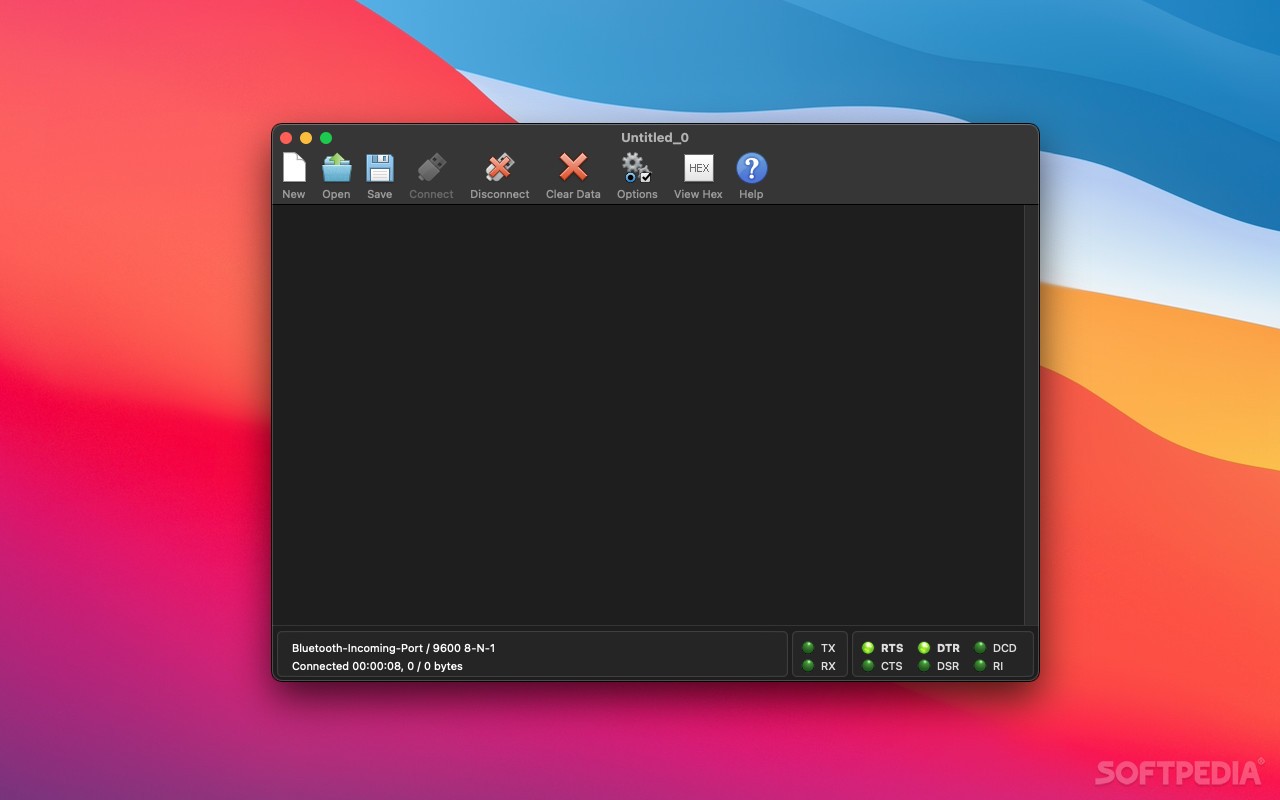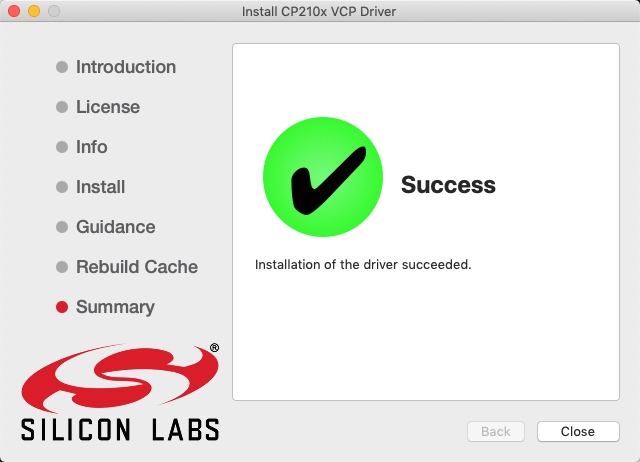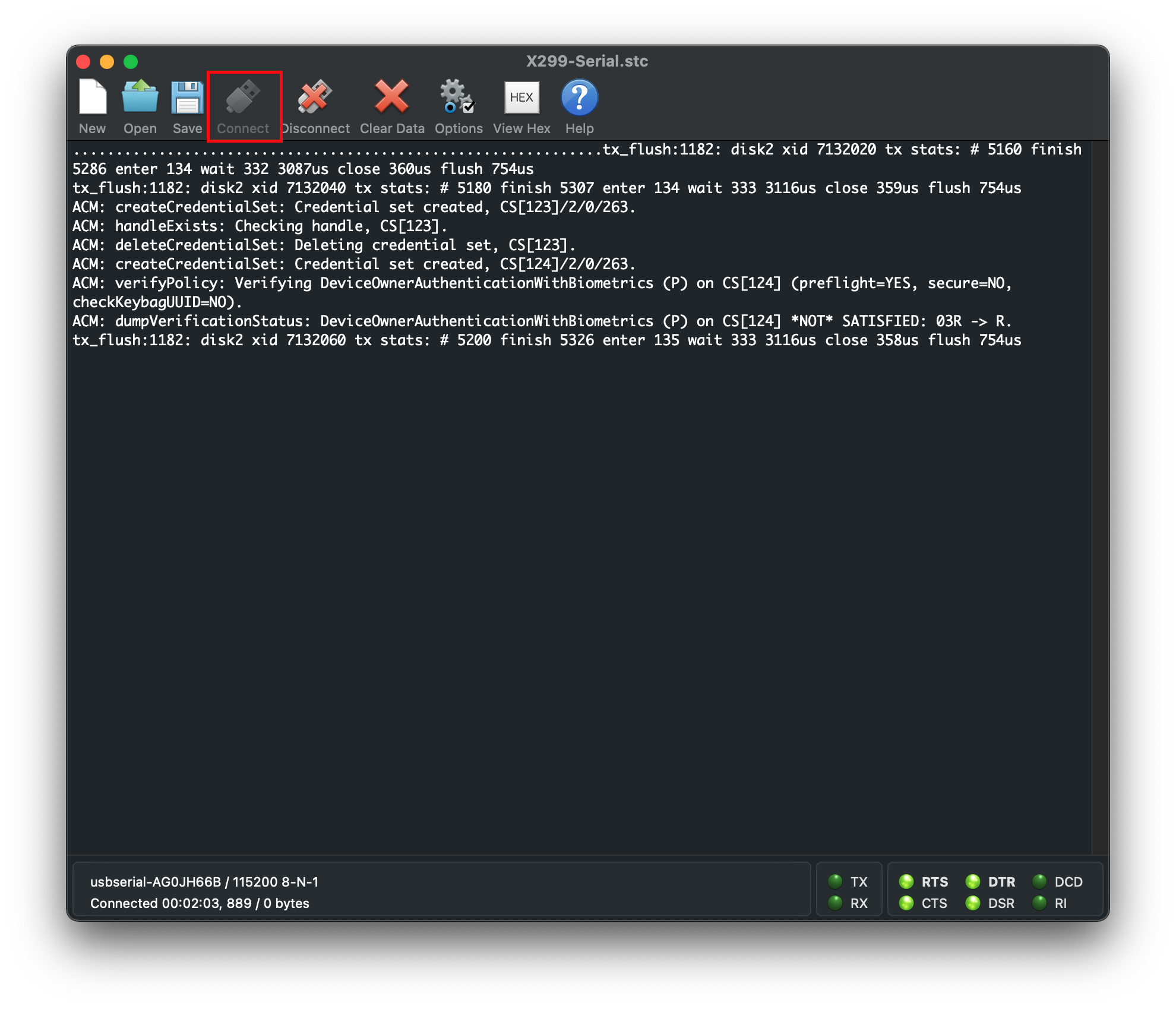
The documentation suggests sending around 25 lines at a time each 1 second (1000 ms) depending on the complexity of the Gcode.
Install coolterm install#
But we have to install Go and Go tools from this page before we can build. For Mac, the instructions to build are in the README.md file on the Github page.
Install coolterm serial#
We have to download the Serial Port JSON Server from here and build it. There are a few more steps before we're ready to use this to send G-Code to TinyG. The first step is to download Chilipeppr. To fix this, I had to follow TinyG's instructions for totally erasing the board using AVRISP2 and Atmel Studio 7 (now installed on the Arch shop atmelice computer) and reflashing the bootloader hex to it. The most likely reason seemed to be that by sending the G-code without the appropriate parsing or perhaps throttling the TinyG's limited buffer by sending it all at once caused an error in the firmware binary, basically screwing the whole board up inside out. Turns out the TinyG is actually extremely susceptible to these problems and there are several forum threads devoted to people who have accidentally crippled their board. This was worrying - I thought I might've bricked it. This didn't seem to do much at first but very soon the TinyG's SpDir pin began to flash red incessantly, and the board wouldn't respond to the reset button or any other kind of interaction. Nonetheless, it seemed to be putting out the right G-code in the right order so I decided to send it straight into the TinyG. I should have noticed something to be amiss when this process was causing my terminal window to bug out, with strange errors affecting the way the characters appeared on screen. To test this, I began by piping my G-code output from Processing straight into my terminal tty port cat /dev/ttys000, and it came out looking something like so (left). I had figured that it would be possible simply by writing to the TinyG's serial port, which was more or less what Coolterm and the ChiliPeppr webapp was doing. The image to toolpath workflow turned out OK, but the difficulty was in actually getting the G-code onto the TinyG. In the Processing file or otherwise perhaps using a Python script we should be able to write a simple for loop inserting this G-code sequence into the main G-code at regular intervals.įollowing the note above, I attempted to use Processing to generate G-code from a webcam feed. Once we had VanGo assembled and knew the position of the ink pot, we were able to work out a simple G-code sequence for the ink to be reloaded each time.This would probably require returning the G-code to an absolute position of the ink pot every X number of steps. Coming back and forth from the ink pot.The dipping motion of the brush coming on and off the paper: could this be given more nuanced?.The extensible Y-axis parameters (depending on the paper used, etc.).Since we had decided to create a painting machine on wheels rather than using a rack and pinion for Y-axis movement, a number of issues need to be accounted for in the software: Using the TinyG JSON server and the serial port used by our TinyG board (ls /dev/ttys.*) we were able to connect the TinyG to three motors, and have it running all three axes at once. We're not sure if this was just a connection issue, but a top speed of F600 was achieved after reconnecting one of the motors. After some adjustments, this number fell to F250.

However, we struggled to find a point at which the trimpots affected the upper limit, while the motor itself refused to run at higher than F380 without stalling, which seemed like a relatively low speed.

According to the TinyG documentation, we could use the trimpots (plastic screws near each motor input) nearest to each axis to fine-tune the amount of voltage going into each motor. Overdriving the motor draws more current and results in overheating and thermal shutdown. The next step was to find the limits of the stepper motor which turned out to be quite challenging. A standard block might be 'G1 F400 X300', indicating linear interpolation 'G1' which finds the straight path between the current position and the next, an 'F400' feedrate of 400mm/minute, and a movement to 300mm on the X-axis, depending on whether the movement is set to relative or absolute. We then proceeded to spin the motors according to the default G-code presets.Ī note on G-Code. We then wired the motors by finding the coil pairs which was fairly simple. We then set up Coolterm and established a simple serial interface with the TinyG.
Install coolterm drivers#
The next step was to establish the USB connection and install the FTDI drivers for Mac. For our initial tests, we used the power supply available in the arch shop, and set the voltage to 24 volts. We made sure to wire the power input correctly.

The first step was to connect to the power. SThe documentation provided for TinyG was quite exhaustive which made the process of setting up and testing the TinyG a lot easier than we had thought.


 0 kommentar(er)
0 kommentar(er)
